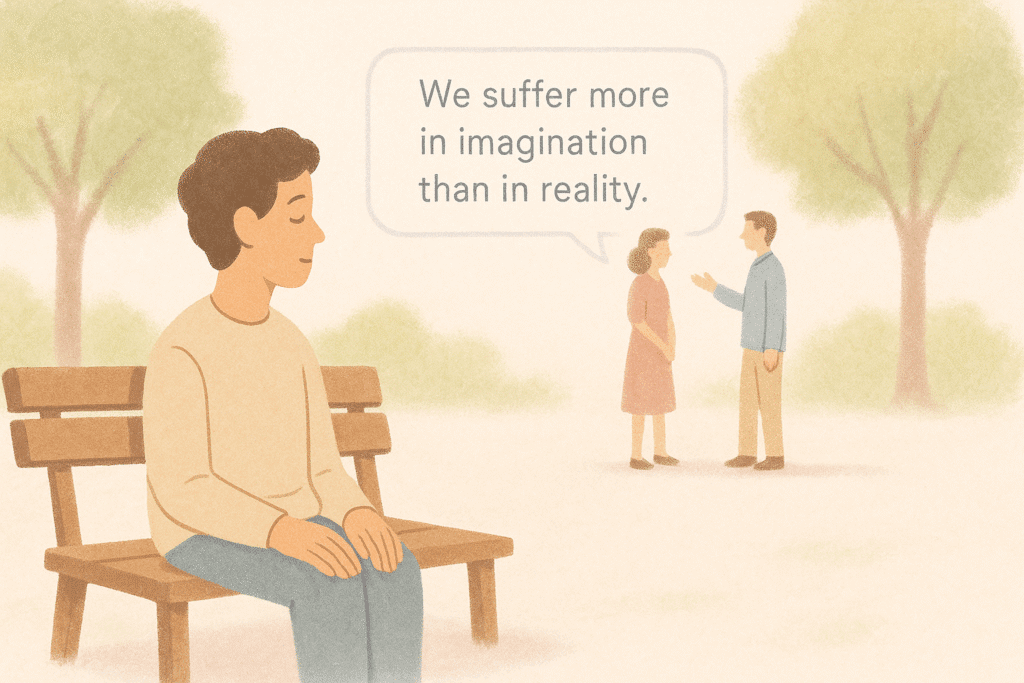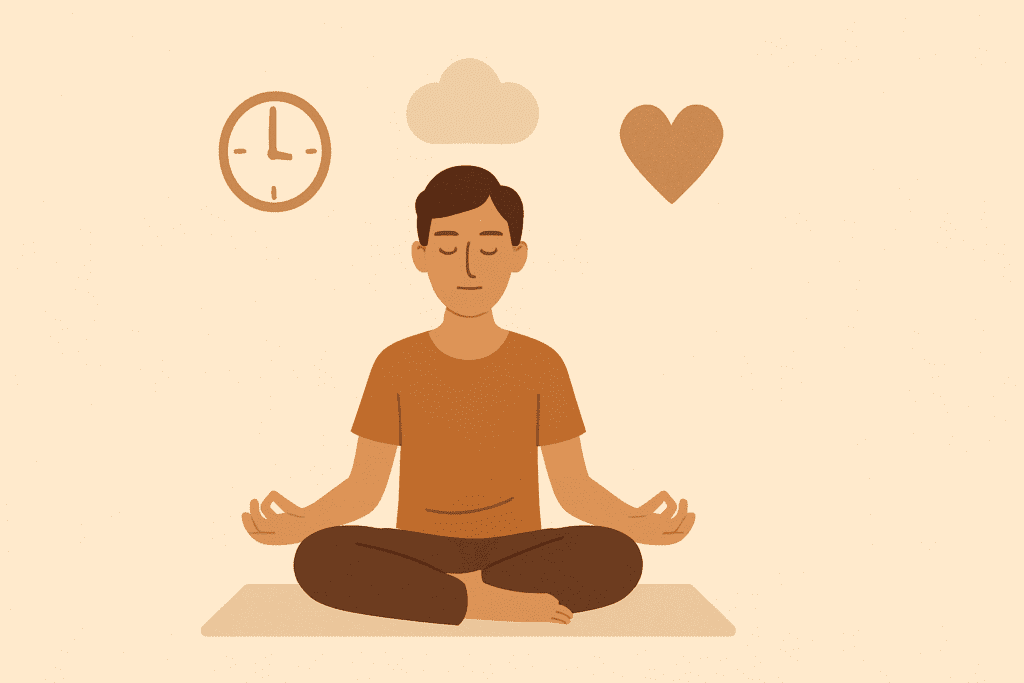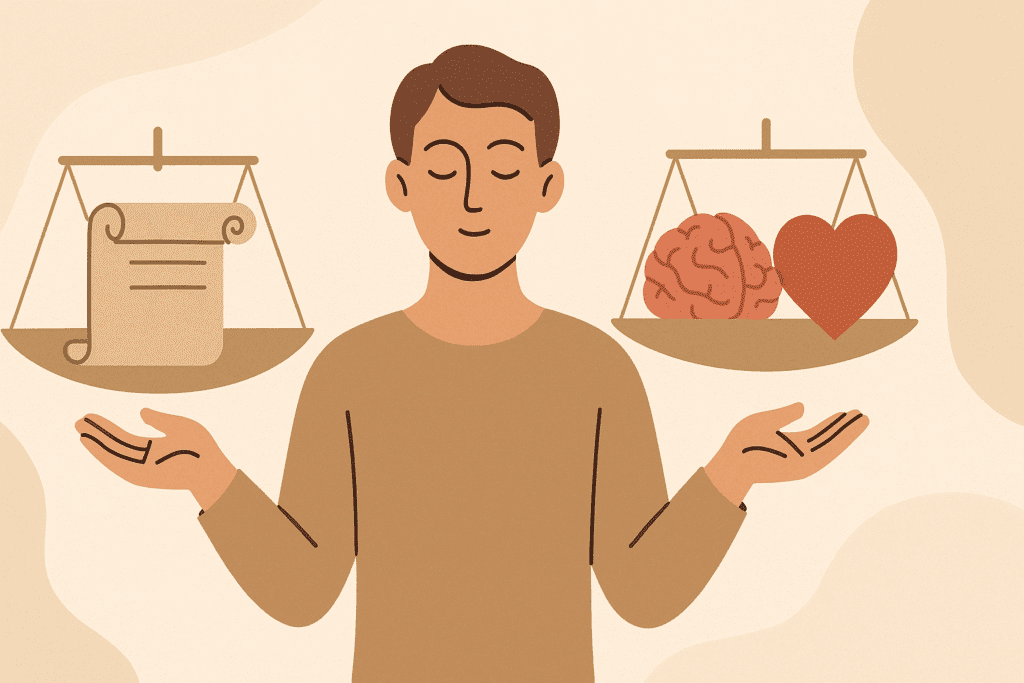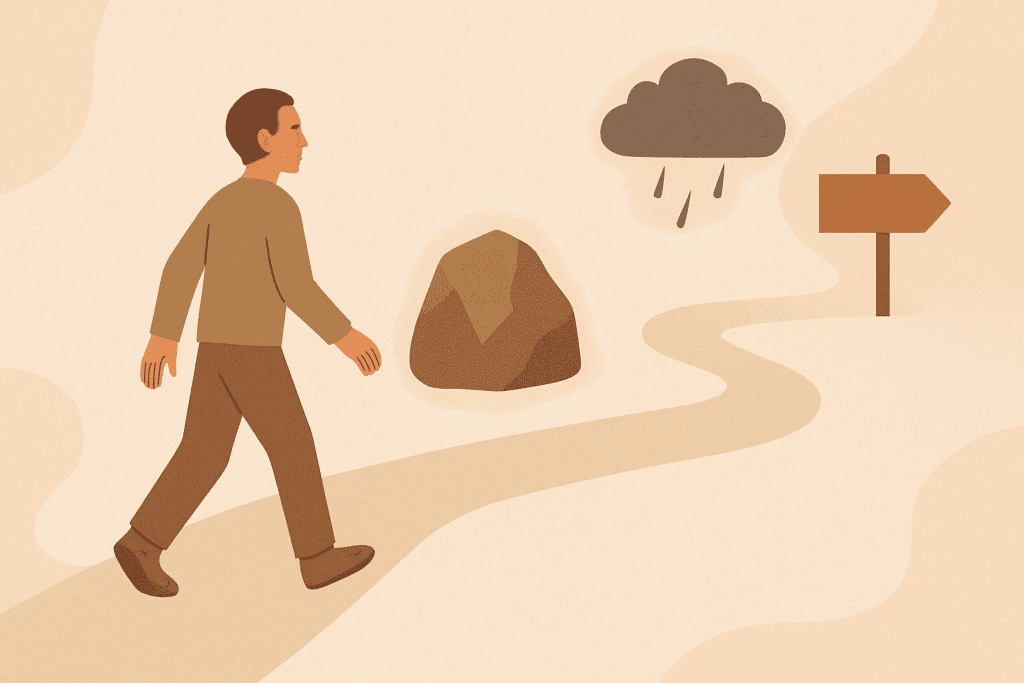Intro

Why is everyone suddenly quoting ancient philosophers on Instagram?
“Control what you can, ignore what you can’t.”
“Memento mori.” (Remember you will die)
“The obstacle is the way.”
“We suffer more in imagination than in reality.”
At some point, you’ve probably scrolled past one of these polished Stoic quotes — often attributed to Marcus Aurelius, Seneca, or Epictetus. But here’s the real question: Does Stoicism actually work in real life, or is it just another philosophical trend dressed up as self-help?
I decided to find out.
Instead of just reading highlights or blog summaries, I went straight to the source — diving into three of the most popular Stoic books:
- Meditations by Marcus Aurelius
- Letters from a Stoic by Seneca
- The Daily Stoic by Ryan Holiday
For weeks, I tested what these ancient (and modern) thinkers had to say. I applied Stoic principles to things like stress, overthinking, work pressure, and even digital burnout.
Some of it was deeply insightful. Some of it? Honestly, pretty hard to relate to in 2025.
This blog isn’t a history lesson — it’s a field test.
We’ll explore what Stoicism teaches, what these books offer (and miss), and whether ancient wisdom can actually hold up in a hyper-connected, emotionally intense modern world.
If you’re tired of vague motivational quotes and want to know what philosophy really looks like in action — this one’s for you.
Let’s get into it.
🧘♂️ What Stoicism Really Teaches (Modern-Friendly Summary)

Before diving into what worked and what didn’t, let’s strip Stoicism down to its core.
Forget the complex Latin quotes — at its heart, Stoicism is a way to survive chaos without losing your mind.
It’s not about suppressing emotions or turning into a robot.
It’s about mastering your internal world when the external world is falling apart.
Here’s what the philosophy actually teaches — in plain language:
🔹 1. Control What You Can, Let Go of the Rest
This is the Stoic foundation. Marcus Aurelius, the Roman emperor, wrote countless reminders to himself about focusing only on what’s within his control: his actions, thoughts, and responses.
You can’t control the traffic jam, but you can control your reaction to it.
You can’t control what others say, but you can choose how much power you give their words.
👉 In today’s terms: It’s the antidote to anxiety, doom-scrolling, and overthinking.
🔹 2. Memento Mori: Remember That You’ll Die
This sounds grim, but it’s meant to sharpen your perspective.
“Memento mori” — Latin for “remember you must die” — isn’t meant to make you sad. It’s meant to wake you up.
Seneca often reminded his readers that life is short, and we waste too much of it on nonsense — holding grudges, worrying what people think, chasing approval.
In the modern world, it’s a reminder to:
- Stop over-scheduling your life
- Quit comparing yourself to people online
- Focus on what truly matters (relationships, peace, purpose)
🔹 3. Premeditatio Malorum: Prepare for the Worst
This Stoic idea encourages you to imagine what could go wrong — not to be negative, but to be prepared and emotionally grounded when things don’t go your way.
Example: Before a job interview, imagine things like delays, tough questions, awkward silences — and mentally rehearse how you’ll handle them.
In real life, this reduces fear and increases confidence.
You’re no longer blindsided — you’re ready.
🔹 4. Emotions Are Not Enemies — They Just Shouldn’t Rule You
Contrary to popular belief, Stoics didn’t try to erase emotion — they just didn’t let emotions control their behavior.
They believed in acknowledging feelings without becoming enslaved by them.
In 2025, that looks like:
- Not reacting impulsively to every email or DM
- Taking a breath before replying in anger
- Letting go of the need to constantly “win” every argument
It’s not about being numb. It’s about being grounded.
🔹 5. Virtue Is the Only True Success
To the Stoics, success wasn’t about money, fame, or status.
It was about character: Am I doing the right thing, even when it’s hard?
They believed in living with wisdom, justice, courage, and self-discipline — regardless of how chaotic the world became.
That’s wildly different from today’s hustle culture, where success is measured in likes, followers, and income.
But ironically, Stoic values are what keep you sane while chasing success.
🔹 Quick Summary: Stoicism in One Sentence
“Focus on what you can control, live with integrity, and don’t let emotions hijack your peace.”
That’s it.
It’s practical.
It’s powerful.
And yes — it can work.
But only if you can apply it.
📚 Book Breakdown: How Each Stoic Book Helped or Didn’t

To really see if Stoicism holds up, I went through three of the most recommended books — two ancient, one modern. Here’s how each one landed when tested in today’s real world.
🏛️ Meditations by Marcus Aurelius
The Philosopher-Emperor’s Journal
Marcus wasn’t writing for an audience — Meditations is his private journal, full of reminders to stay humble, grounded, and calm despite ruling an empire.
✅ What Helped:
- Reading his self-talk helped normalize doubt, fear, and overwhelm — even emperors have bad days.
- One standout idea: “You have power over your mind — not outside events.” Reframing stress through this lens genuinely helped me stay calmer in tense situations.
⚠️ What Didn’t:
- Some parts felt repetitive or cryptic.
- The ancient phrasing made it hard to stay engaged at times — you need to read slowly and patiently.
💡 Real-Life Application:
- I used his mindset during a tough family argument — instead of reacting emotionally, I paused, responded calmly, and walked away with zero guilt.
✉️ Letters from a Stoic by Seneca
Wisdom in Letter Form
Seneca, a Roman philosopher and political advisor, wrote personal letters packed with life lessons — from dealing with anger to overcoming grief.
✅ What Helped:
- His reflections on how we waste time were like a slap in the face.
It made me rethink how much energy I pour into social media, news, and mental clutter. - His tone feels surprisingly modern — like a tough-love mentor from 2,000 years ago.
⚠️ What Didn’t:
- Some parts feel preachy — like a wise old uncle who won’t stop talking.
- The advice, while solid, sometimes lacks clear next steps.
💡 Real-Life Application:
- I started limiting my digital distractions using his “life is short” mentality — and it actually made my days feel more intentional.
📅 The Daily Stoic by Ryan Holiday
Modern Stoicism, One Day at a Time
This book gives you 366 daily Stoic quotes and interpretations. It’s clean, practical, and digestible.
✅ What Helped:
- Great for beginners. Each day’s passage gave me something to reflect on without overwhelming me.
- The real-life examples (from sports, business, and modern life) made ancient ideas feel relevant.
⚠️ What Didn’t:
- At times, it felt too light. Some days felt more like motivational quotes than deep Stoic philosophy.
- Lacks the emotional intensity of reading Marcus or Seneca directly.
💡 Real-Life Application:
- I used it like a Stoic calendar — one idea each morning while journaling. It helped me start days feeling focused and grounded.
🧾 Final Verdict: Which Stoic Book is Best?
| Book | Best For | Biggest Drawback |
| Meditations | Deep reflection, mindset rewiring | Dense and slow |
| Letters from a Stoic | Practical mindset shifts | Long-winded at times |
| The Daily Stoic | Daily motivation & structure | Lacks deep depth |
How I Applied Stoicism in Daily Life (And What Changed)

Reading philosophy is one thing.
Living it is something else entirely.
After weeks of reading Meditations, Letters from a Stoic, and The Daily Stoic, I decided to apply some of the core Stoic ideas to actual situations in my daily life. The goal?
Not to become perfectly Stoic — but to feel more grounded, clear, and in control.
Here’s what I tried — and what happened.
📴 1. Social Media Detox Inspired by Detachment
One of the biggest Stoic lessons is to not crave external validation.
So, I took a hard look at how often I checked likes, comments, and views. It was a lot. Too much.
Inspired by Epictetus’ reminder that “It’s not things that upset us, but our opinions about things,” I tried to let go of my attachment to constant online feedback.
💡 What I Did:
- Deleted Instagram for 7 days
- Turned off all notifications
- Stopped comparing myself to others’ highlight reels
✅ The Result:
Less anxiety, fewer distractions, and a strange sense of mental calm.
Was I missing out? Not really. I was actually tuning back in.
🧘♀️ 2. Practicing Premeditatio Malorum Before Big Moments
The Stoic idea of premeditatio malorum — imagining what could go wrong — sounds pessimistic. But it’s meant to prepare you, not paralyze you.
💡 What I Did:
Before a presentation at work, I wrote down:
- What if my slides fail?
- What if I get tough questions?
- What if I blank out?
Then I planned a calm response to each.
✅ The Result:
I felt less nervous and more in control.
Even when a tech glitch happened, I stayed calm — and my confidence actually increased.
📓 3. Morning Journaling (The Stoic Way)

Marcus Aurelius literally journaled to remind himself of his values, and Ryan Holiday recommends the same.
💡 What I Did:
Every morning for a week, I asked myself:
- What could stress me today?
- How would a Stoic handle it?
- What matters most?
✅ The Result:
It took 5 minutes but set the tone for the entire day.
It made my mind clearer and stopped me from reacting impulsively when things got frustrating.
👂 4. Listening Without Reacting
Stoics believe emotions aren’t enemies — but that emotional overreactions are.
💡 What I Did:
In conversations, I focused on listening without planning a response.
I tried to pause before giving advice or judgment — just like Seneca advised.
✅ The Result:
People felt more heard.
I avoided unnecessary debates.
And I felt less drained by small talk or emotional triggers.
🧠 5. Reframing Failures as “Obstacles to Train On”
One of my favorite modern Stoic mantras is from Ryan Holiday:
“The obstacle is the way.”
I started to treat setbacks — like late clients, bad days, or self-doubt — as training opportunities.
💡 What I Did:
Instead of saying “This is bad,” I asked, “What is this teaching me?”
✅ The Result:
My mindset shifted from reactive → reflective.
It didn’t solve problems magically, but it made me feel less helpless and more capable.
Final Thought on Practice:
Stoicism isn’t about perfection. It’s about perspective.
Even a few small shifts — like detaching from validation or pausing before reacting — made huge differences in how I handled life.
⚖️ Where Stoicism Falls Short (And Why That’s Okay)
Let’s be honest.
As much as Stoicism helped me feel more grounded, it’s not a perfect solution for everything.
There were moments where the advice felt cold, unrealistic, or even unhelpful — especially in emotionally heavy situations.
Here’s what stood out as limitations, both personally and philosophically.
😶 1. It Can Feel Emotionally Distant
Stoicism teaches you to “remain unmoved by pleasure or pain,” but sometimes — you actually need to feel things deeply to process them.
When I faced an emotionally charged moment (like helping a friend going through grief), the Stoic advice to stay detached felt almost robotic. What that moment called for was empathy, not neutrality.
🧠 2. It’s Not a Substitute for Mental Health Support
Stoicism emphasizes inner control — but it can’t address every mental health issue.
For someone dealing with anxiety, trauma, or depression, the advice to “just focus on what you can control” may not be enough — or could even feel dismissive.
Modern problems often need modern tools — like therapy, medication, or support systems — that go beyond philosophy.
✅ Reminder: Using ancient wisdom doesn’t mean ignoring modern science.
🗣 3. It Lacks Guidance on Human Connection
One thing that surprised me? Stoicism doesn’t talk much about relationships — at least not in a deeply emotional or nurturing way.
It tells you how to stay composed in a crisis, but not how to connect, love, forgive, or grow with others.
In today’s world, where social dynamics, emotional intelligence, and vulnerability are key to personal and professional success, this is a clear gap.
⚖️ 4. It Can Be Misused as a Shield
Some people adopt Stoicism not to grow — but to avoid.
It’s tempting to say things like “I’m above this” or “It doesn’t bother me” — when really, you’re just avoiding confrontation, reflection, or emotional work.
Stoicism isn’t about denial — it’s about discipline.
Knowing when you’re using it to dodge vulnerability vs. genuinely improve is critical.
🎯 Final Word on the Flaws
Does Stoicism have limitations? Absolutely.
But that doesn’t make it useless.
It just means it should be one of many tools, not your entire emotional toolkit.
Conclusion: Is Stoicism Life-Changing or Just Good on Paper?

So… after weeks of testing Stoic philosophy against the messiness of modern life, here’s the honest verdict:
Yes, Stoicism can help — but it’s not a miracle pill.
If you’re looking for emotional resilience, sharper focus, and a way to calm the chaos, Stoicism absolutely delivers. It helped me feel more grounded, respond instead of react, and handle stress like a grown adult (most of the time 😅).
But if you’re hoping it will fix your anxiety overnight, heal past wounds, or teach you how to connect more deeply with others — you’ll probably be disappointed.
Stoicism is a tool, not a solution. And like any tool, it works best when used with others — like therapy, mindfulness, or real-world emotional support.
If anything, reading these books forced me to slow down, think critically, and examine how I show up in daily life. And that, in itself, was worth every page.
📚 Books Mentioned (Add Your Affiliate Links Here):
Here’s a quick list of books I read — plus a few bonus ones if you’re interested in exploring Stoicism or building mental clarity in daily life.
🟢 Meditations by Marcus Aurelius
🟢 Letters from a Stoic by Seneca
🟢 The Daily Stoic by Ryan Holiday
Bonus Recommendations:
🟣 The Obstacle Is the Way by Ryan Holiday
🟣 Ego Is the Enemy by Ryan Holiday
🟣 Man’s Search for Meaning by Viktor Frankl
🟣 Atomic Habits by James Clear
💬 Final Thought
Don’t just read Stoicism — try it.
Pick one principle. Apply it this week.
Whether it’s letting go of what you can’t control or journaling for five minutes every morning — if you walk away with any mindset shift, these ancient pages have done their job.
See how it lands in your world — not Rome.
FAQ’s
What is the easiest Stoic book to start with?
If you’re new to Stoicism, The Daily Stoic by Ryan Holiday is a great entry point. It offers bite-sized lessons that are easy to apply to everyday life without diving into ancient texts right away.
Is Stoicism about suppressing emotions?
No — Stoicism teaches you to understand emotions, not ignore them. It’s about pausing before reacting and making decisions based on reason instead of impulse.
Can Stoicism actually help with anxiety and overthinking?
Yes, for many people, Stoic practices like journaling, premeditatio malorum, and focusing only on what you can control have helped reduce anxiety and increase peace of mind.
What’s the main Stoic idea I can apply today?
A simple and powerful one:
“You can’t control what happens, but you can control how you respond.”
Try applying that the next time you’re stressed — and watch how your reactions shift.
Is Stoicism still relevant in 2025?
Absolutely. In a world of constant distractions, noise, and emotional burnout, Stoicism offers timeless tools for mental clarity, resilience, and personal growth.
Who is considered the “God” of Stoicism?
Stoicism doesn’t have a single “god,” but Zeno of Citium is considered the founder of the philosophy.However, many people refer to Marcus Aurelius, Seneca, and Epictetus as the “pillars” or “masters” of Stoicism due to their enduring influence.
What’s the Best Stoic quote of all time?
“You have power over your mind—not outside events. Realize this, and you will find strength.” – Marcus
“The obstacle is the way.” – Marcus
“It’s not what happens to you, but how you react to it that matters.” – Epictetus
“Waste no more time arguing what a good man should be. Be one.” – Marcus
“We suffer more often in imagination than in reality.” – Seneca
